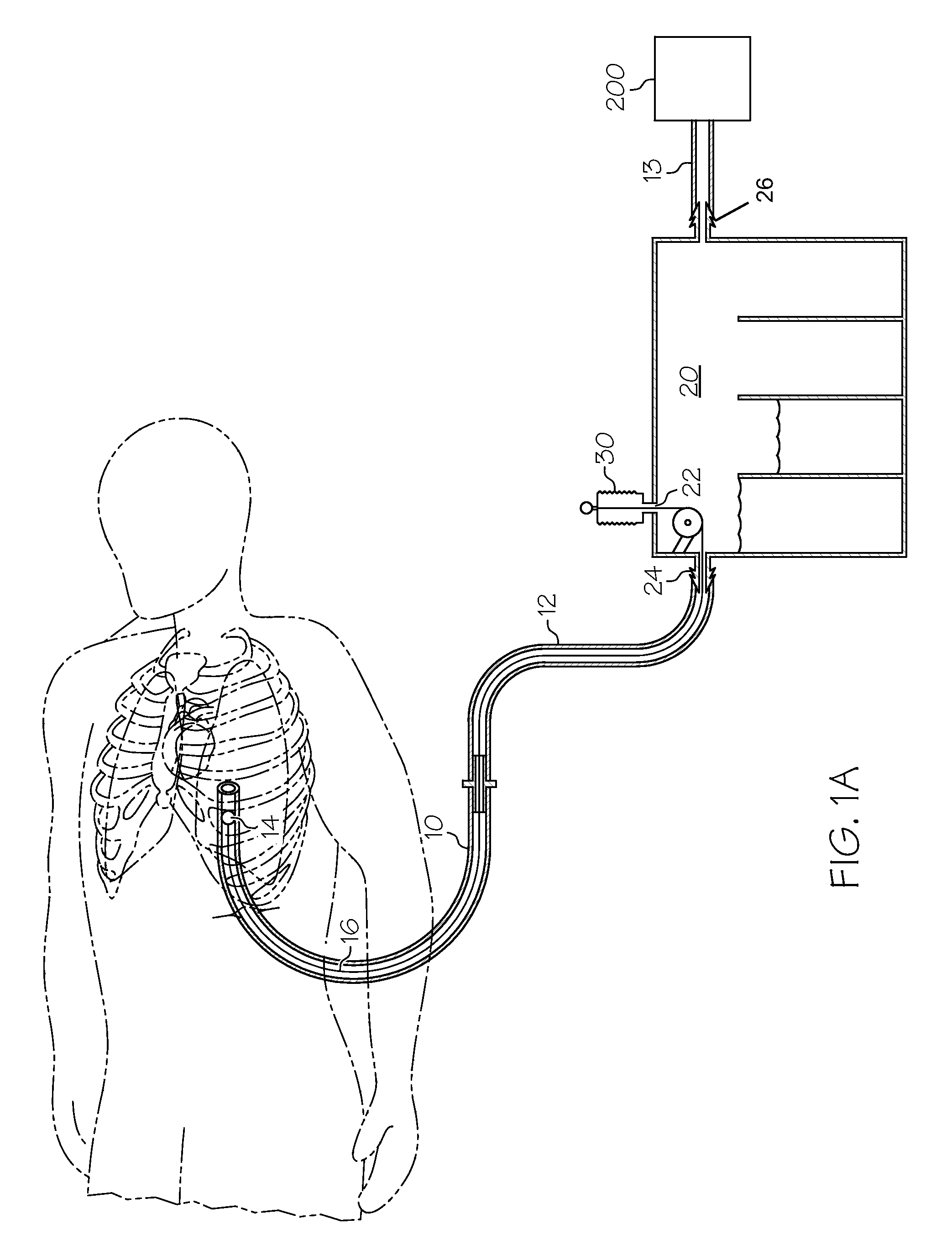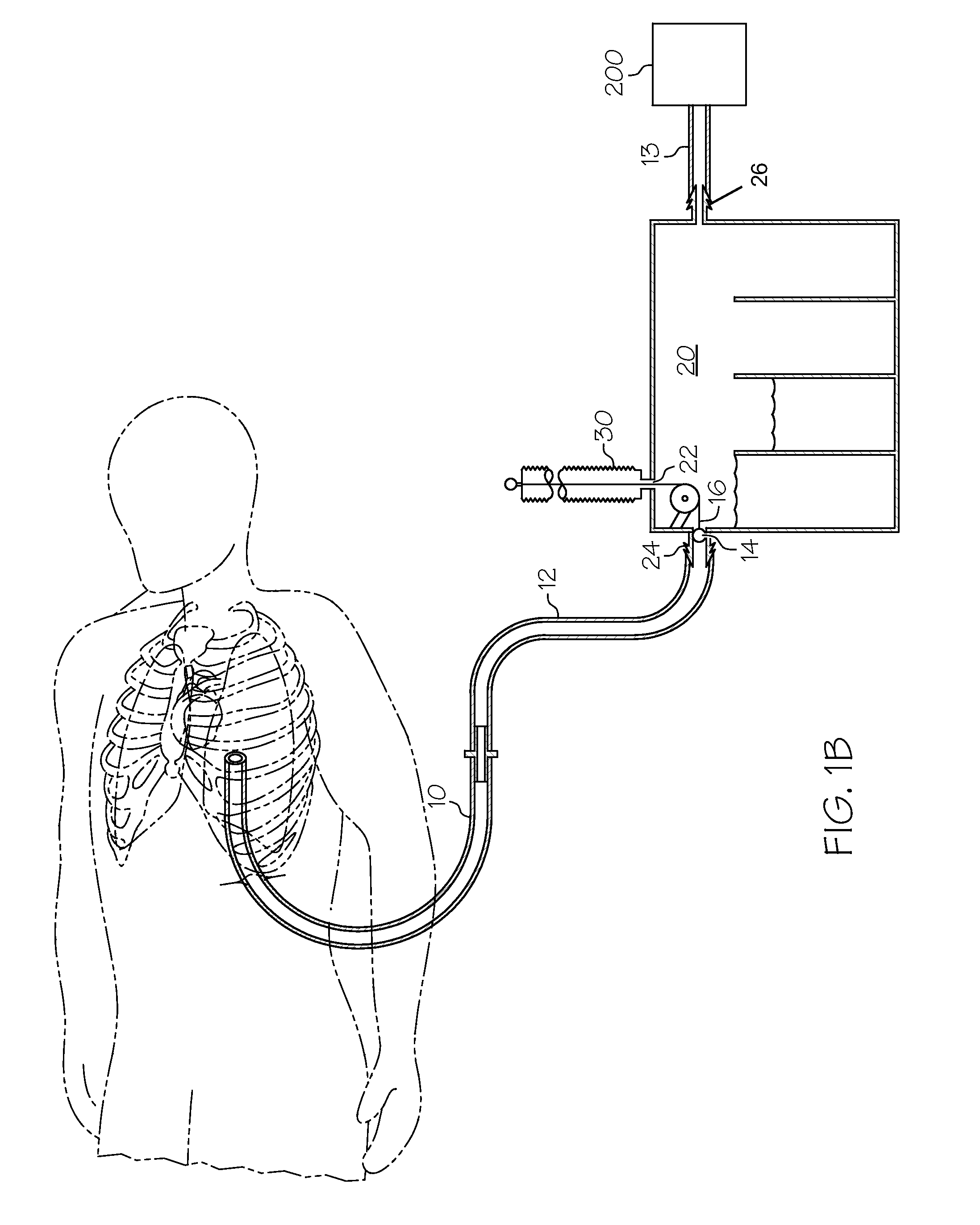Methods and devices to clear obstructions from medical tubes
a technology of medical tubes and obstructions, applied in the direction of cleaning using liquids, catheters, applications, etc., can solve the problems of obstructing the suction pathway of the medical tube, rendering the medical tube partially or totally non-functional, and causing serious or potentially life-threatening consequences
- Summary
- Abstract
- Description
- Claims
- Application Information
AI Technical Summary
Benefits of technology
Problems solved by technology
Method used
Image
Examples
Embodiment Construction
[0024]As used herein, the terms proximal and distal are generally to be construed with reference to a patient that has been or is to be fitted with a medical tube, such as a chest tube. For example, the distal end or region of a medical tube (e.g. chest tube) is that end or region that is to be inserted into or disposed more adjacent (e.g. within) the patient during use, as compared to the opposite end or region of the medical tube (chest tube). Similarly, a distal element (or the distal side or region of an element) is nearer to the patient, or to the distal end of the chest tube, than a proximal element (or the proximal side or region of an element). Also herein, the “terminal” end of a tube, wire or member refers to its distal end.
[0025]FIG. 1 shows a schematic representation of a medical tube being used to drain accumulated fluid from within the body cavity of a patient, in accordance with an exemplary embodiment of the invention. In FIG. 1 the medical tube is inserted into and ...
PUM
 Login to View More
Login to View More Abstract
Description
Claims
Application Information
 Login to View More
Login to View More - R&D
- Intellectual Property
- Life Sciences
- Materials
- Tech Scout
- Unparalleled Data Quality
- Higher Quality Content
- 60% Fewer Hallucinations
Browse by: Latest US Patents, China's latest patents, Technical Efficacy Thesaurus, Application Domain, Technology Topic, Popular Technical Reports.
© 2025 PatSnap. All rights reserved.Legal|Privacy policy|Modern Slavery Act Transparency Statement|Sitemap|About US| Contact US: help@patsnap.com



